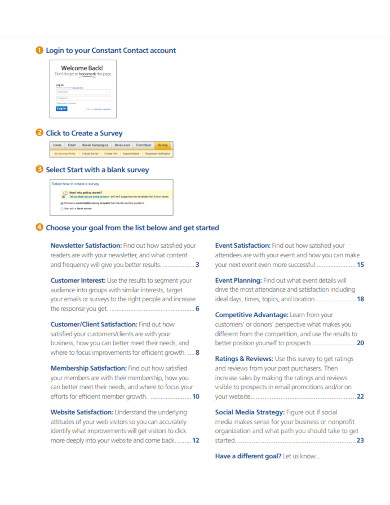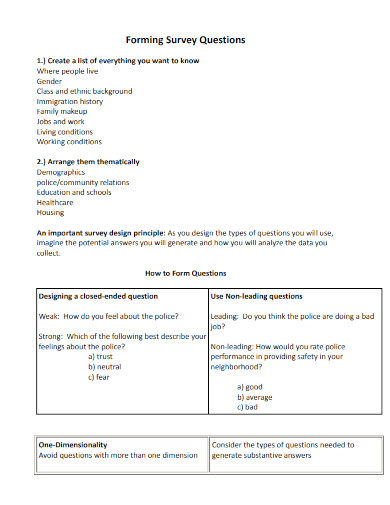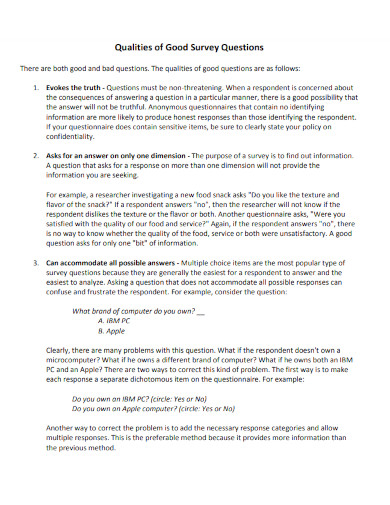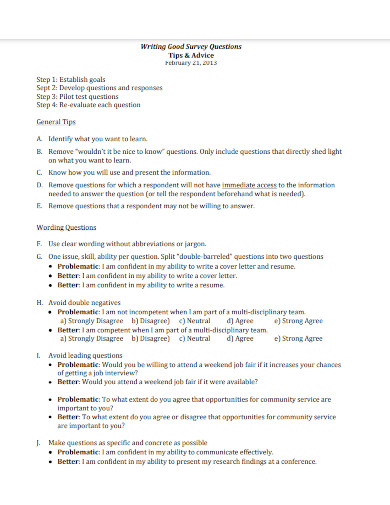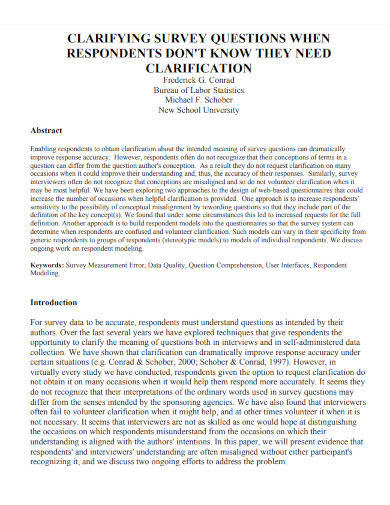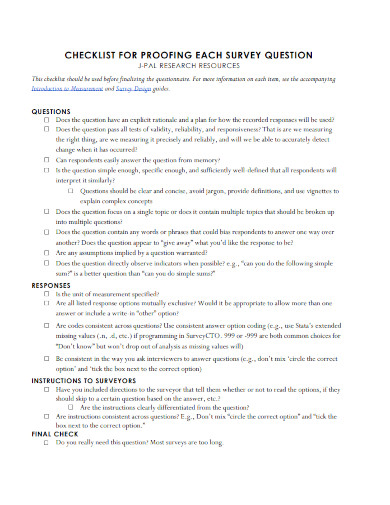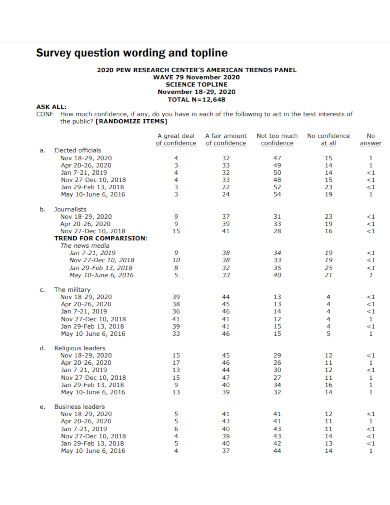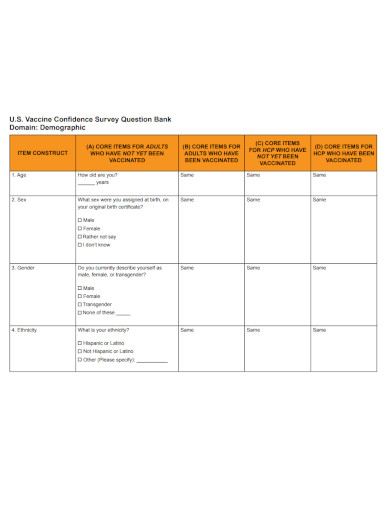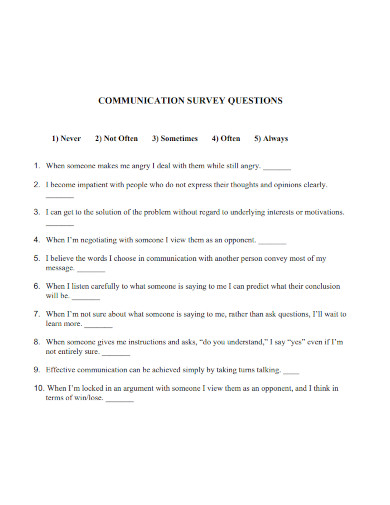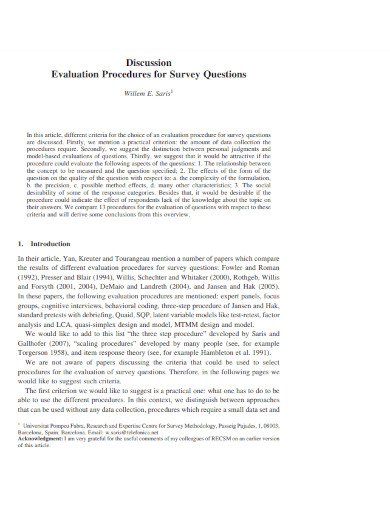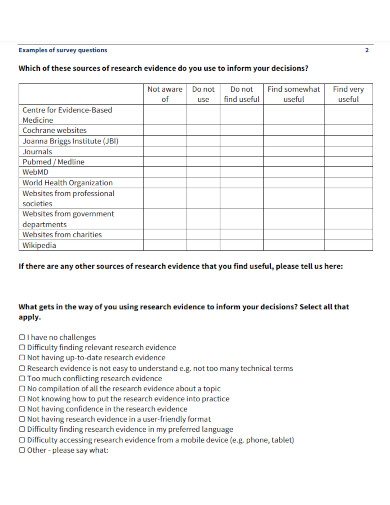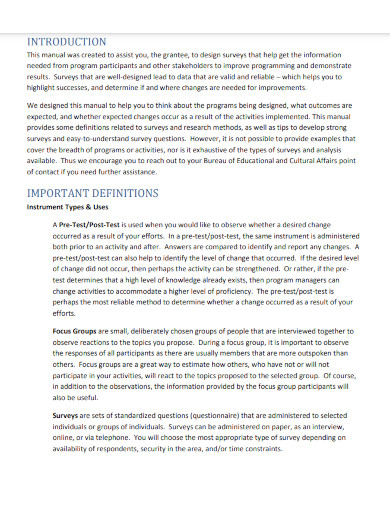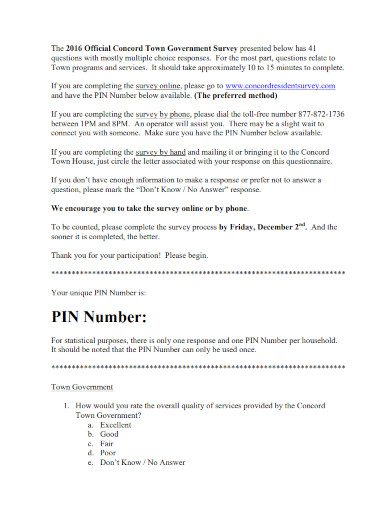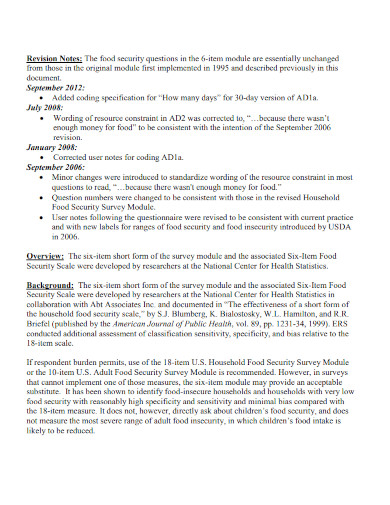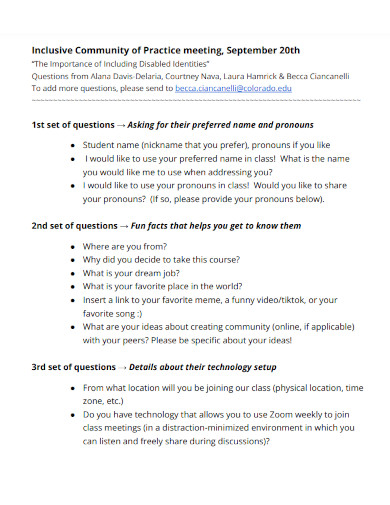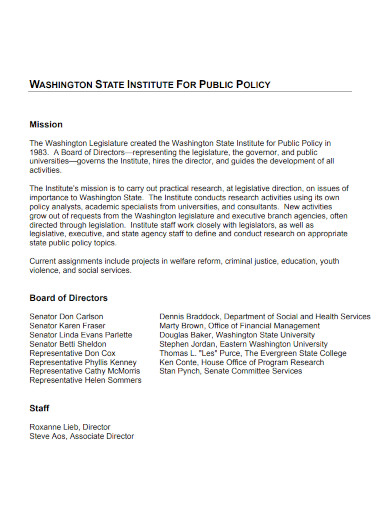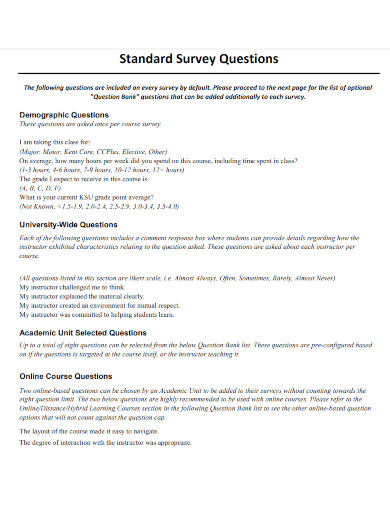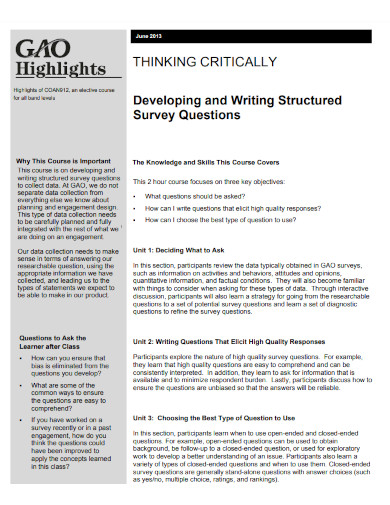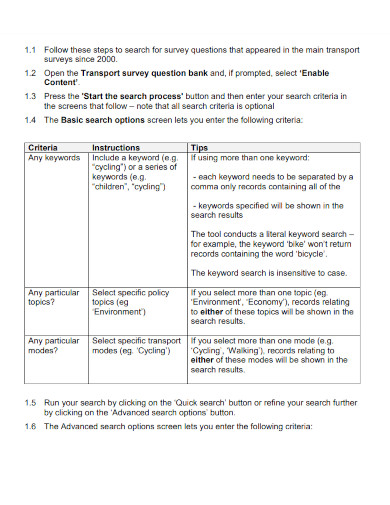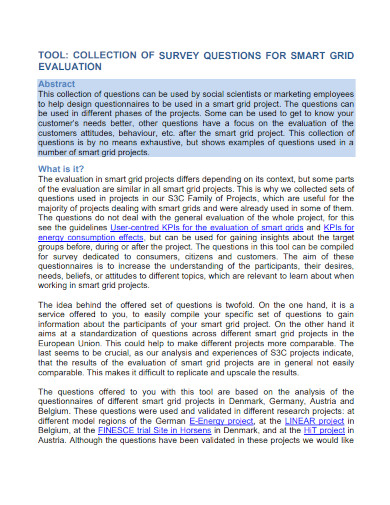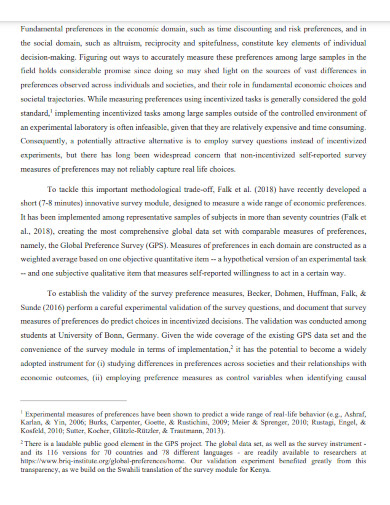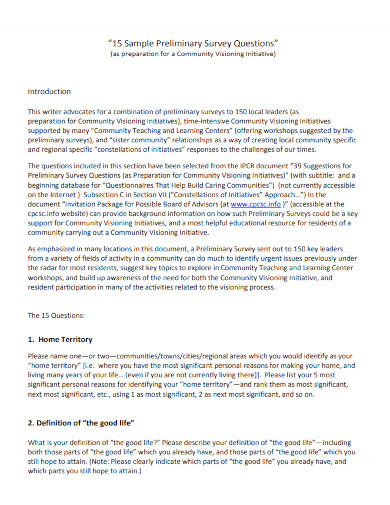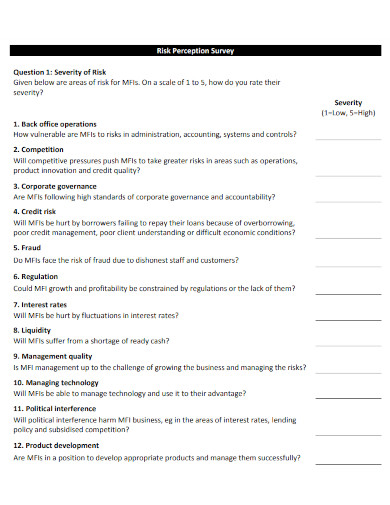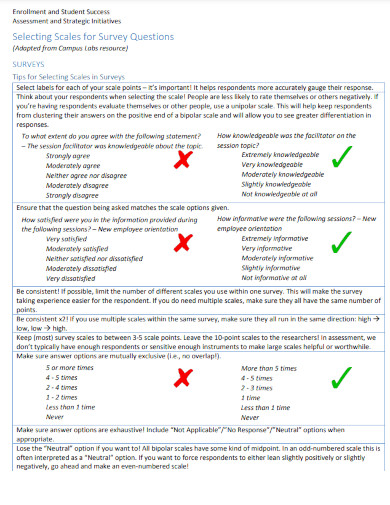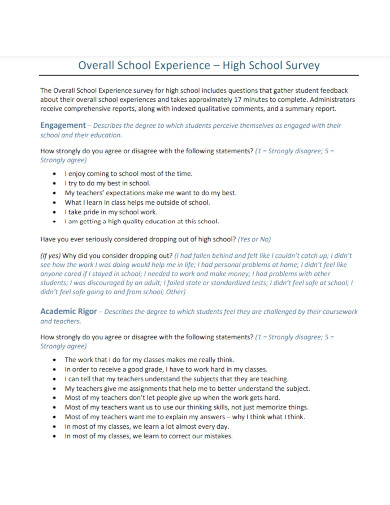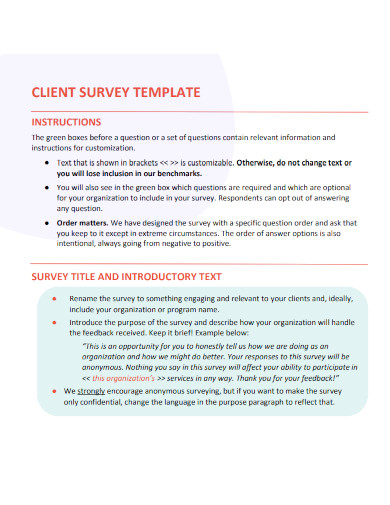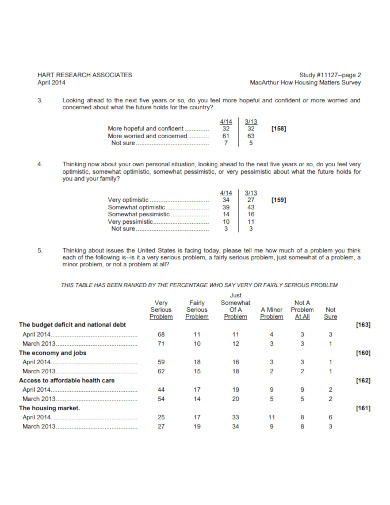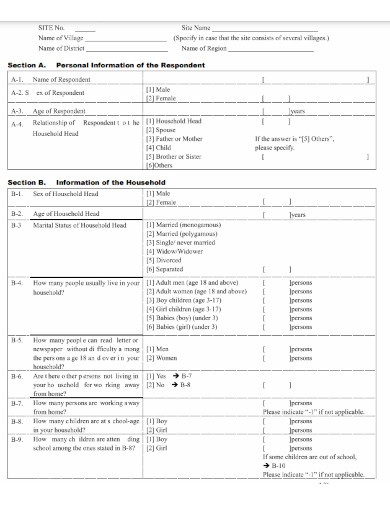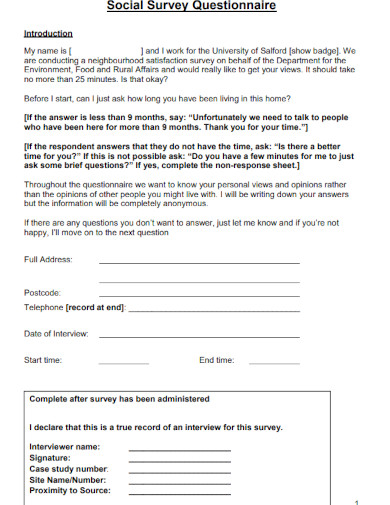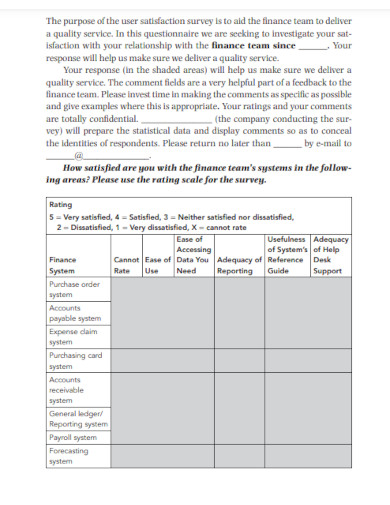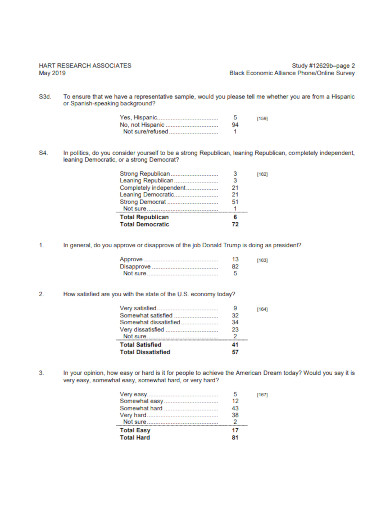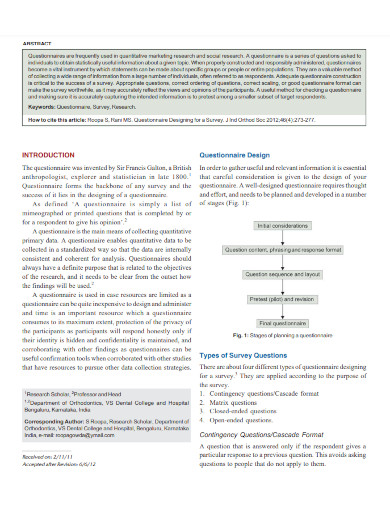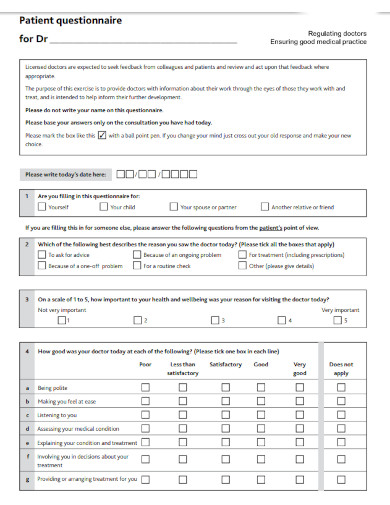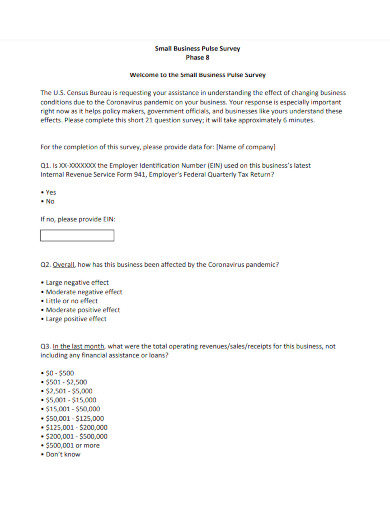38+ Survey Question Examples to Download
Quantitative research gathers data from plenty of people that would span ten to hundreds of different people. To obtain the data, researchers will utilize surveys as their data gathering method.
1. Sample Survey Questions & Tips
2. Forming Survey Questions
3. Evaluating Survey Questions
4. Qualities of Good Survey Questions
5. Writing Good Survey Questions Advice Template
6. Designing Survey Questions
7. Clarifying Survey Questions Template
8. Survey Question Checklist
9. Survey Question Wording Topline
10. Vaccine Confidence Survey Question Bank
11. Communication Survey Question
12. Evaluation Procedures for Survey Questions
13. Examples of Survey Questions
14. Developing Survey Questionnaires
15. Citizen Survey Questions
16. Household Food Security Survey Question Template
17. Accessibility Survey Questions
19. Service Provider Survey Questions
20. Standard Survey Questions
21. Developing Structured Survey Questions
22. Survey Question Development
23. Transport Survey Question Bank
24. Survey Questions for Smart Grid Evaluation
25. Measure Preferences Survey Questions
26. Sample Preliminary Survey Questions
27. Risk Perception Survey Question
28. Selecting Scales for Survey Questions
29. Overall School Experience Survey Questions
30. Client Survey Question Template
31. Standard Questionnaire Template
32. Sample Household Survey Questionnaire
33. Social Survey Questionnaire
34. Satisfaction Survey for Finance Team
35. Standard Survey Questionnaire Template
36. Employee Satisfaction Survey Questions
37. Questionnaire Designing for a Survey
38. Patient Survey Questionnaire
39. Small Business Pulse Survey Questionnaire
What Is a Survey Question
A survey is a data gathering tool that is composed of survey questions that will be answered by the individual answering the survey. The survey question is a query that is aligned with the survey topic.
How to Write a Survey Question
A well-written survey question can grab the attention of the target audience and ensure the integrity of the answer. If you are still confused as to how survey questions should appear, or how to form survey questions then you may look at the examples of survey questionnaires, survey question samples, and PDFs concerning survey questions.
1.) Select a Topic
Begin by selecting a topic to create a topic about. Doing this will set the tone, and the topic the survey will tackle. A good topic will always try and investigate or put into question one point, rather than tackle a lot of points at the same time. The topic will also set the target demographic used for the survey, which in turn will determine the terms and words used in the survey questions. More often than not your target demographic or audience will be people with normal intelligence, try to minimize the usage of technical jargon on your research questions.
2.) Research the Topic
You must research the topic to provide questions on your survey questionnaire. This is done to ensure that the questions will stay on topic and provide aligned data for you to use in your research.
3.) Create the Question & Set the Answer Type
After you have selected and researched your chosen topic you must create questions aligned with the topic you have chosen. Be sure to avoid biased questions and technical jargon which might confuse your target audience. If you are unsure if an individual does not fit the target demographic, then you may also create demographic questions that the individual will answer before the survey.
4.) Repeat Until Finished
When you have finished writing the survey question, you may repeat steps one to three. A good survey will have five to ten survey questions to not bore the target audience.
FAQs
What type of survey questions should we avoid?
There are many types of bad survey questions we should avoid using in a survey, these questions are called biased questions. Leading questions are a type of biased question that tries to read the reader to a certain answer often dictating your reader the interpretation of the question. Loaded questions are a type of biased question that creates an assumption that the reader does a specific action or habit. Double-barreled questions are two questions combined into one; these type of question requires the reader to have two answers instead of one, which might confuse the reader. There are also a couple of habits to avoid making questions, one of which is to avoid using technical terms or terms that a normal reader wouldn’t understand.
When is the best time to use the Likert scale?
Unlike yes or no answers, a Likert scale allows the reader to give a more specific answer. This is because the Likert scale measures the degree or position in which the reader agrees/disagrees with the statement, which is often missed when using a yes or no answer. Not only does the Likert scale allow a more in-depth representation of the reader’s answer, but the Likert scale will also allow the reader to voluntarily answer the questions.
Why do we need to avoid faulty survey questions?
Faulty or biased survey questions will always ensure that an answer will teeter towards a specific degree. This will make the survey results invalid and unreliable, rendering the survey null. The survey will then become a waste of time and manpower, which will result in a loss of resources.
Survey questions are the lifeblood of surveys, as they are the main point of the survey. Just make sure to avoid specific types of survey questions to prevent confusion and bias in your gathered data. In conclusion, a well-crafted and evaluated survey question will obtain quality data and information that will be used in answering the quantitative research question or thesis topic.


